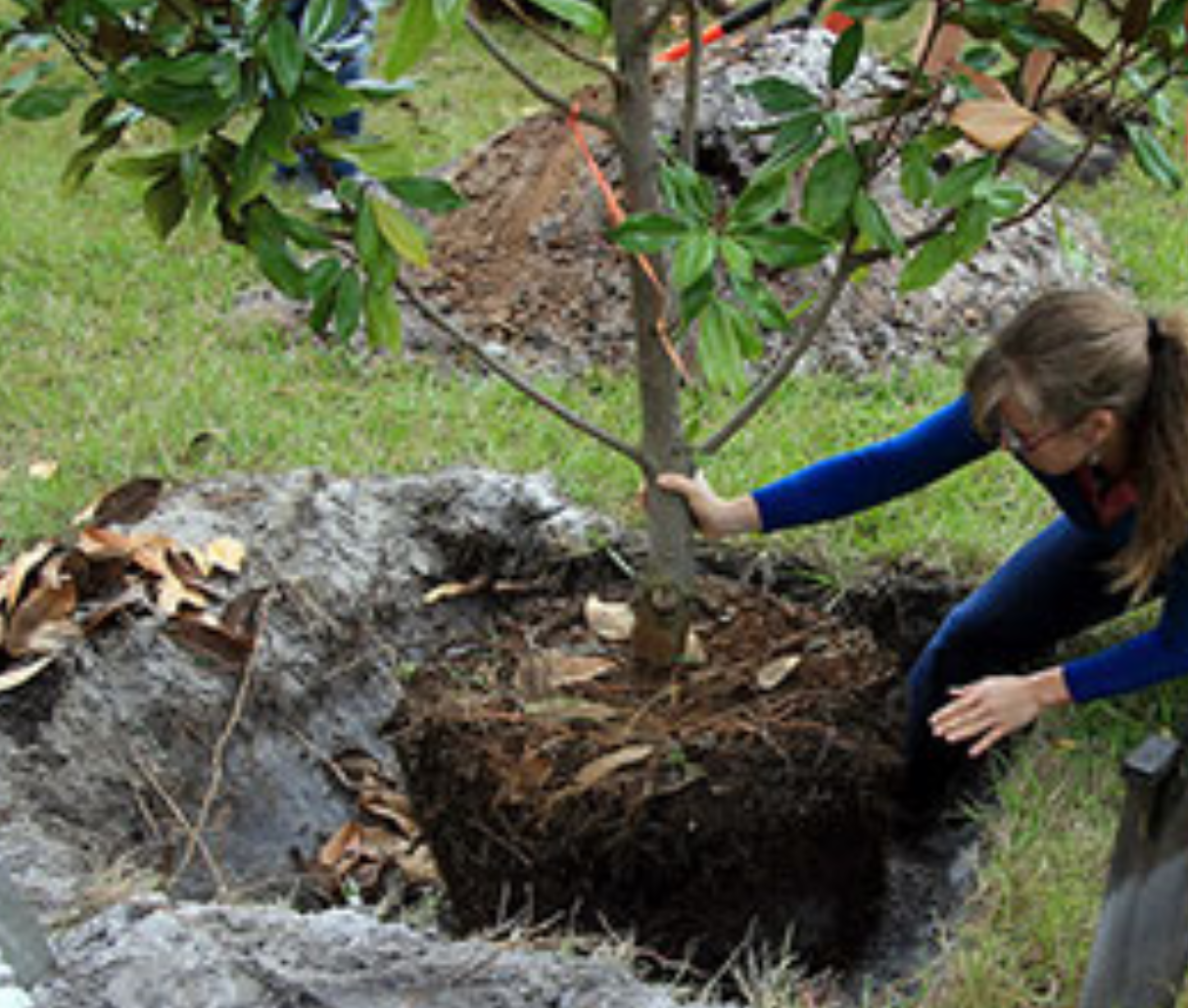
by Carrie Stevenson | Jan 22, 2020
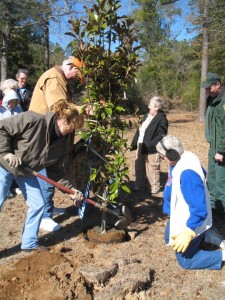
Master Gardeners demonstrate correct tree planting techniques.
Last week, we celebrated Florida’s Arbor Day. “What?” you may say—“Isn’t Arbor Day in the spring?” Well, yes and no. National Arbor Day is celebrated in the spring (April 24 this year), usually within a day or two of Earth Day. However, because of the wide range of climatic environments throughout the United States, each state has its own date based on ideal growing conditions. As it stands, Florida’s is the 3rd Friday in January, as we are situated so very far south. Alabama and Georgia, where so many of us north Floridians experience similar weather, hold their Arbor Days in late February.
Contrary to popular opinion, the optimal planting time for trees is not in the spring, but in fall and winter. Planting during dormancy allows trees to focus their energy resources on growing healthy roots. In the coming spring, a steady supply of warmth, sunshine, and pollinators will bring on leaf growth, flowers, and fruit.
Check with your local Extension offices, garden clubs, and municipalities to find out if there is an Arbor Day event near you! Several local agencies have joined forces to organize tree giveaway events and sales in observance of Florida’s Arbor Day.
Saturday, January 25th
Leon County: UF/IFAS Extension Leon County Master Gardeners will assist with the county’s Arbor Day tree planting at 9 a.m. Martha Wellman Park, 5317 W. Tennessee St., Tallahassee.
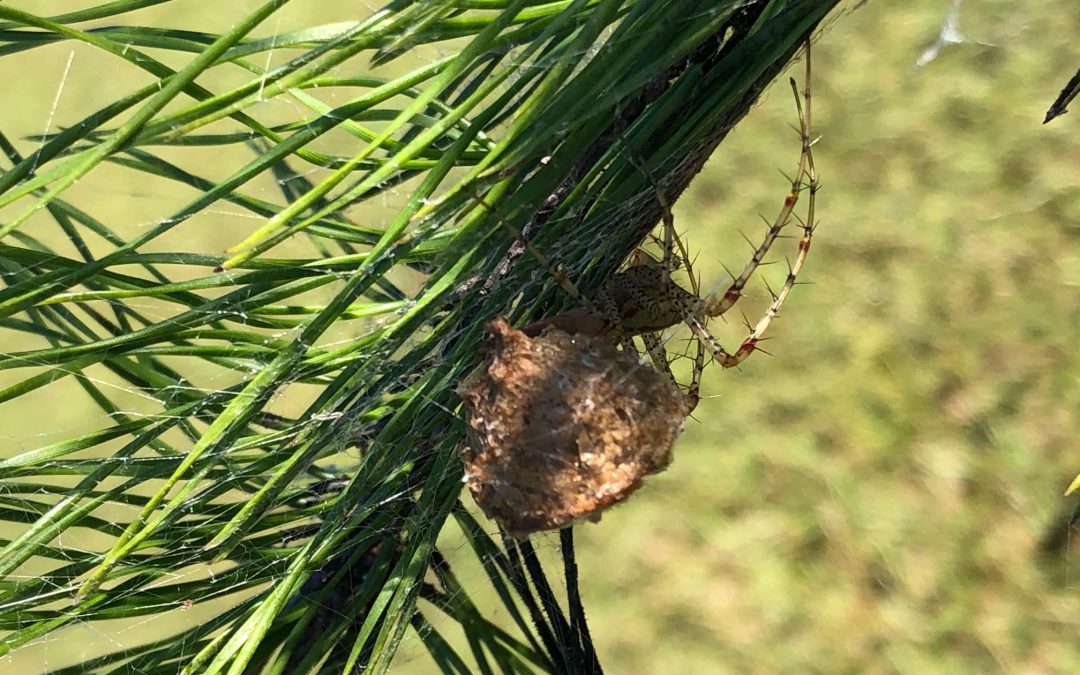
by Carrie Stevenson | Nov 7, 2019
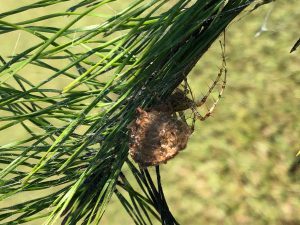
A female striped lynx spider protects her egg sac. Photo credit: Carrie Stevenson, UF IFAS Extension
With Halloween just behind us, some of us may still have fake spiders in our yards and cotton webbing all over the shrubbery. Spiders (along with bats) are among those creatures feared and demonized in folklore this time of year. It is important to remember, however, that both organisms are important predators and managers of our insect population.
Last week during a walk on the Extension property, I came across a large brown spider hovering protectively near her egg sac. Perched in a newly planted pine tree, I saw no obvious web. Instead, the spider loosely wrapped the pine’s needles with silk, forming a support structure for the relatively large egg sac.
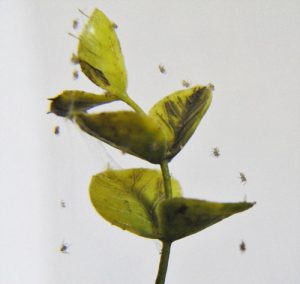
Newly hatched striped lynx spiderlings on silk scaffolding covering a plant. Photograph by Laurel Lietzenmayer, University of Florida.
On further research, I learned that this female striped lynx spider (Oxyopes salticus) would have mated just once, after responding to a male’s courtship display (involving drumming and elaborate leg touches). She would have produced the egg sac 1-4 weeks after mating, attaching it to the pine needles, and will tend to it until her young emerge 20 days later. Up to five days after hatching, lynx spiderlings disperse by “ballooning” from the plant—they release a silk thread into the air, allowing the wind to carry them off like a tiny skydiver. Those spiderlings will mature into adults by 9 months, living their entire lifespan in just one year.
During that year, though, lynx spiders are important predators of pest insects. Instead of catching bugs in a web, they stalk their prey like a big cat—hence the name, “lynx.” They prey on many fly species, but also on bollworms and green stinkbugs that are major pests of cotton and soybean crops. These spiders are beneficial and highly vulnerable to insecticides.
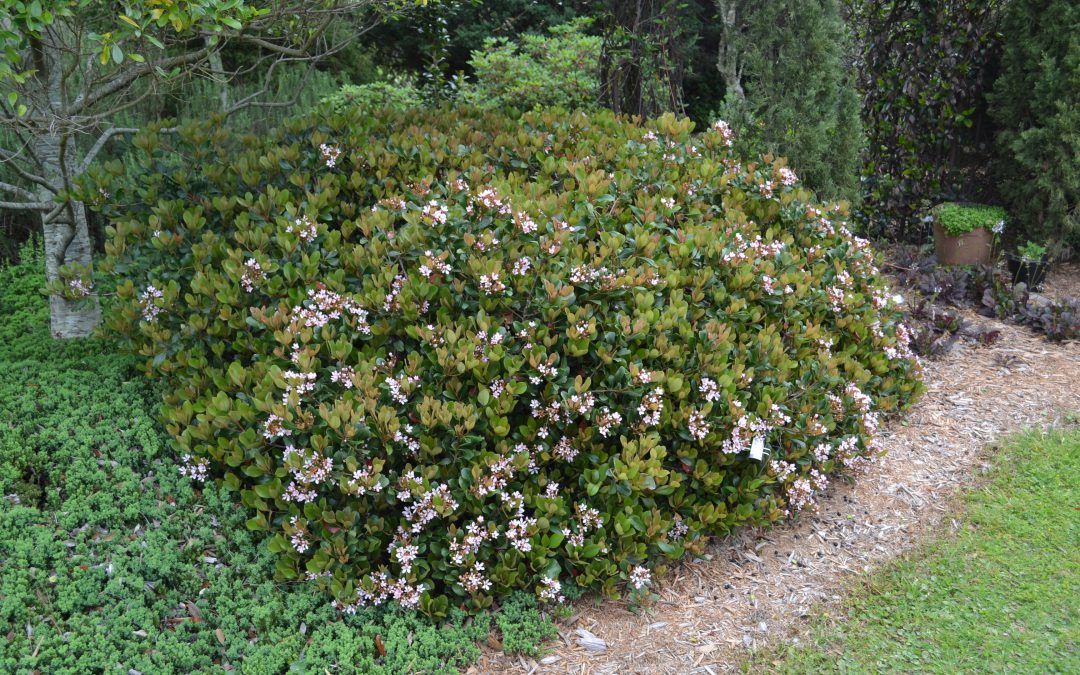
by Carrie Stevenson | Aug 1, 2019
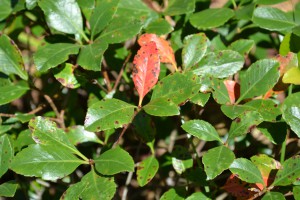
Reddish, round spots are the first sign of Entomosporium Leaf Spot on Indian Hawthorn. Photo credit: Beth Bolles, UF IFAS Extension
Indian hawthorn (Rhaphiolepis spp.) is one of those great evergreen shrubs with such a reputation for hardiness that most folks tend to plant it and not worry about it. Indian hawthorn is not a Florida native, but is adapted to our weather conditions and is widely used in home landscapes throughout the Southeast.
However, it is important that homeowners and landscape managers pay attention to them, particularly during the warm, often wet weather growing season. During such conditions, the plant is vulnerable to Indian hawthorn leaf spot, caused by a fungus called Entomosporium mespili. Several years back, this fungus spread through the once-popular red-tip plant (Photinia fraser), to the extent that this species is now rarely used.
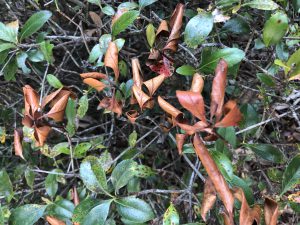
An Indian hawthorn plant heavily affected with leaf spot fungus can be covered with round circles on the green leaves, eventually leading to plant death. Photo credit: Carrie Stevenson, UF IFAS Extension
Symptoms of leaf spot fungi include small, circular red spots on young leaves, which then expand into larger patches. On older leaves, the spots are gray in the middle with red/maroon borders. Eventually, leaves can drop and entire plants may defoliate and die. The disease typically spreads through rainwater or overhead irrigation.
To manage the disease, it is best to create space between a sick plant and a healthy one to allow better air circulation. This will allow leaves to dry off after rainfall events and prevent expansion of spores. Be sure not to overwater, prune, or fertilize shrubs that show signs of the disease, as this encourages growth—the fungus thrives particularly well on young, vigorously growing leaves.
For leaf spot problems that become difficult to manage with just cultural practices, fungicides containing chlorothalonil, myclobutanil, or propiconazole may be used. Always follow label instructions when using chemical management and apply in the spring or fall. In addition, dead or dying plants should be removed and replaced with cultivars showing resistance to Entomosporium leaf spot, including Eleanor Tabor, Indian Princess, Gulf Green, Betsy, Blueberry Muffin, Georgia Petite, Olivia, and Snow White.
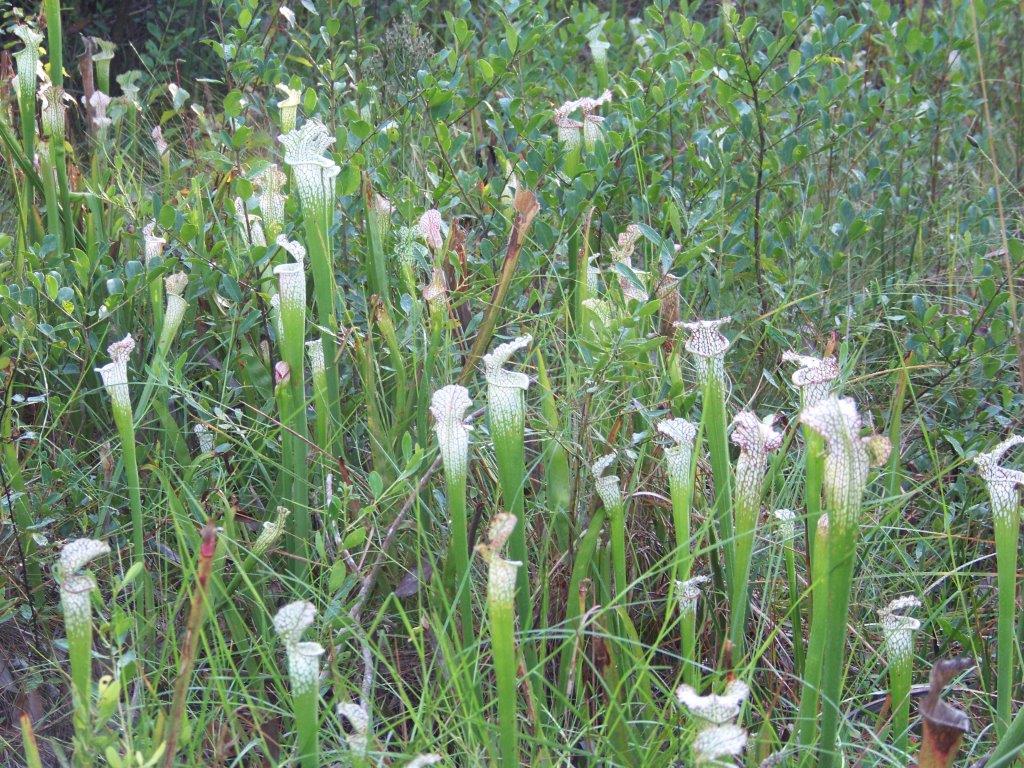
by Carrie Stevenson | Jun 19, 2019
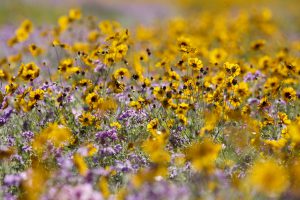
Wildflowers near Live Oak, Florida. Image Credit, UF / IFAS
Florida (“land of flowers” in Spanish) is and has always been full of flowers, and countless civic and public organizations work diligently to protect and promote the beauty of our natural ecosystems. Did you know that the Florida Wildflower Foundation works with the Florida Department of Transportation (FDOT) to preserve wildflower areas on state-maintained roads throughout Florida? This effort really took off in the 1960’s when non-native Crimson clover started sprouting among sod planted by the state FDOT, and has grown into a much larger statewide initiative. The state wildflower license plate program provides funding for these efforts.
Wildflower areas along highways not only improve beauty on the roadsides, but provide habitat for countless pollinator insects that drive our $1.2 billion (annual) citrus and agricultural industries and our own backyard landscapes. In addition, leaving no-mow areas along highways saves money on mowing costs, reduces soil erosion, and improves air quality.
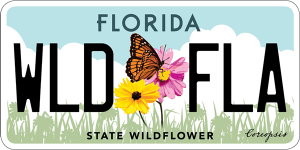
The state wildflower license plate supports wildflower preservation efforts statewide. Photo credit: Florida Wildflower Foundation
Wildflower viewing is typically best in the spring and fall, and particularly in areas (such as state parks and forests) that have been recently managed by prescribed fire. Many low-lying areas are home to beautiful native species such as pitcher plants, hibiscus, and meadowbeauty. Be very careful when viewing or stopping to see roadside wildflowers, and be sure to find designated parking areas to prevent accidents. To find a map of the wildflower trails, visit your local tourism bureau or go online at https://flawildflowers.org/protect/.
Currently, every Panhandle county from Jefferson County east has designated wildflower areas. The Escambia County Board of Commissioners passed a wildflower ordinance supporting the program, and a committee met in May 2019 to determine more areas of the county appropriate to set aside for the program. As opposed to planting new wildflowers, the program prioritizes conserving roadside areas that already support healthy wildflower populations. If you know of good candidates for preservation on state roads in Escambia or any other panhandle county, please contact me (ctsteven@ufl.edu) or Liz Sparks (liz.aparks57@gmail.com) with the Florida Wildflower Foundation.
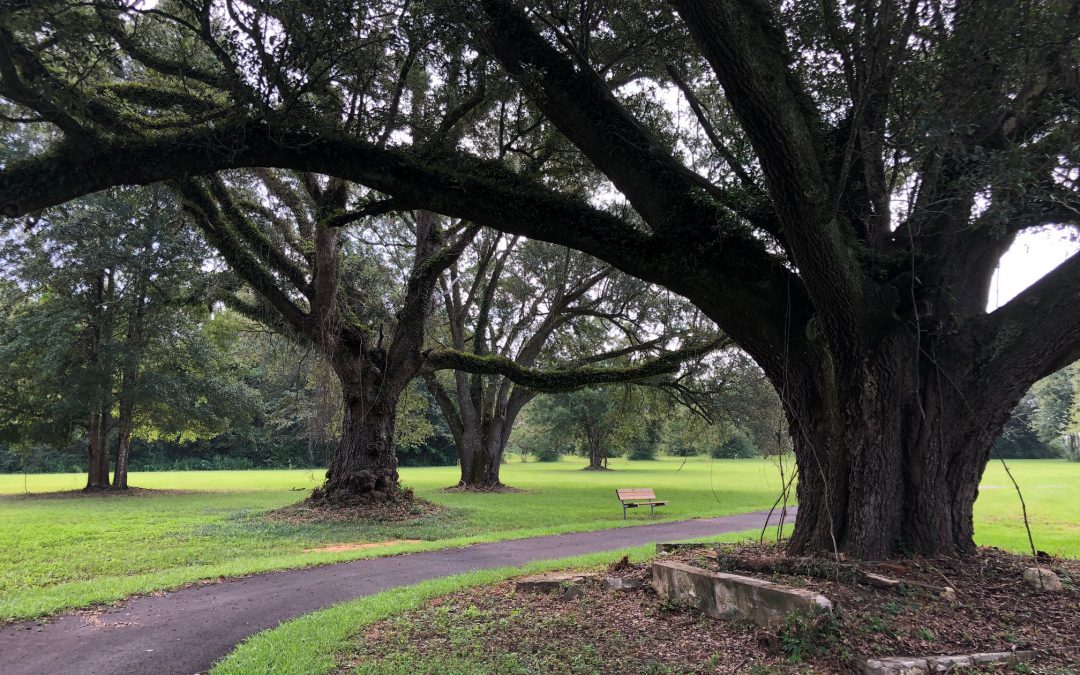
by Carrie Stevenson | Apr 16, 2019
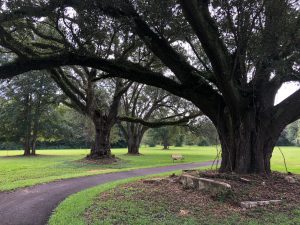
Historic live oaks provide shade and wildlife habitat at the Escambia Extension walking trail. Photo credit: Carrie Stevenson, UF / IFAS Extension
A recent study of 3-5 year olds found that the average pre-reading American child could identify hundreds of marketing brand logos (McDonald’s, Disney, even Toyota). Most researchers would be mightily challenged to find even a middle school student who can identify more than a couple of trees growing in their own backyard. The fields and forests many of us grew up in are steadily converting to look-alike suburban areas, so this lack of local natural knowledge is commonplace. As the quote by Senegalese forester Baba Dioum goes, “In the end, we will conserve only what we love; we will love only what we understand and we will understand only what we are taught.” If kids and adults do not appreciate and understand the natural world around them, we are unlikely to preserve these priceless wonders.
To do our part towards this aim of educating others, we at Escambia Extension received a grant from International Paper to plant 30 trees around our office’s walking track. Every tree has a clearly marked identification tag listing its common and botanical name.
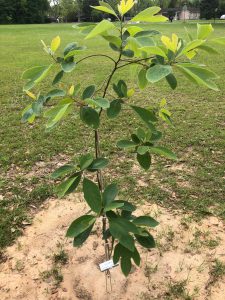
A newly planted sassafras tree on the Extension walking trail. Photo credit: Carrie Stevenson, UF / IFAS Extension
Initially we just planned to add more shade trees to the sunny side of the track, but after a discussion with local foresters, we realized this effort could be an ideal teaching tool. The local middle and high school Future Farmers of America (FFA) chapters participate in a tree identification contest, and are tasked with knowing 50 native tree species. While 10 of them were tropical species that do not perform well in north Florida, we have the other 40 planted here on the property. Students and any interested citizen interested in learning these native species can walk along our track, getting exercise and taking in the natural world around them.
A spring walking event will kick off the official opening of the tree identification trail, so join us April 26 to learn more about healthy living and the value of trees. Or, join us for an Extension Open House on April 27 to explore the demonstration gardens, purchase vegetable plants, or learn more about Extension’s wide array of community services.














